
It should tell you something about this year’s Broadway season that the best shows included fart humor, a devastatingly complex story of sexual assault, a middle-aged female friendship in Ohio and a homicidal barber. The Great White Way — should we even call it that anymore? — is possibly more diverse than it’s ever been. Not just culturally but narratively as well.
The productions that made this list vary in tone, era, circumstances and format. They dazzle with both grandiose and simple sets and plotlines, low-brow to high-brow. And they remind us how every night on Broadway can and should be a different, extraordinary experience.
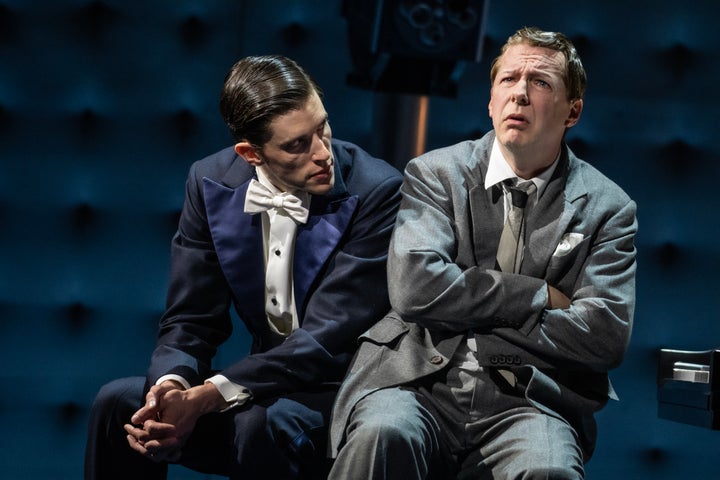
“Good Night, Oscar”
Director Lisa Peterson’s single-night saga based on the sour humor of superstar pianist Oscar Levant isn’t an upper. In fact, its only luster comes from the stark stage and camera lights on him during a sobering sit-down with host Jack Paar on “The Tonight Show” in 1958. They might as well be a mask that covers up his well-documented mental health struggles that seem to be only exacerbated by the glare of fame. Illuminated by an exceptional and difficult performance of Sean Hayes in the title role, “Good Night, Oscar” delicately examines celebrity neuroses, mental health taboos and the bleakness of comedy in the post-WWII Eisenhower era.
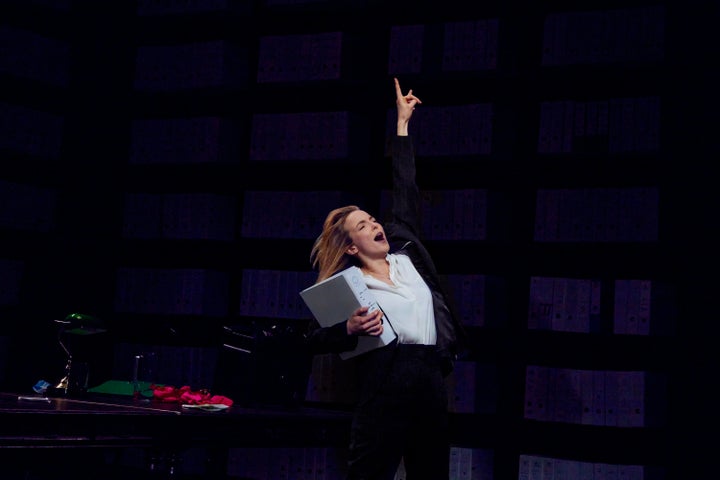
“Prima Facie”
It probably comes as no surprise to hear that Jodie Comer is an absolute marvel in playwright Suzie Miller’s “Prima Facie,” a wrenching one-woman show that recollects the impact of a sexual assault. The actor, who showed her kaleidoscopic range in “Killing Eve,” is just as captivating in a play that compels her to be far more compromising. As Tessa (Comer) tells the audience, she rose from a working-class family to the top of her law school to become a shrewd prosecutor rivaling her male peers, until the night she was attacked and everything shifted for her. Gliding from reenactments of tipsy nights out dancing to cramming for exams at the college library to showing off her skills in court and, later, questioning her entire worldview and personal choices, Comer pulls the audience through her story with ferocious speed and emotion. It’s needed to underscore the deeply complicated portrayal of a self-possessed woman grappling with her own memory, self-gaslighting and eye-opening revelations in the age of #MeToo.
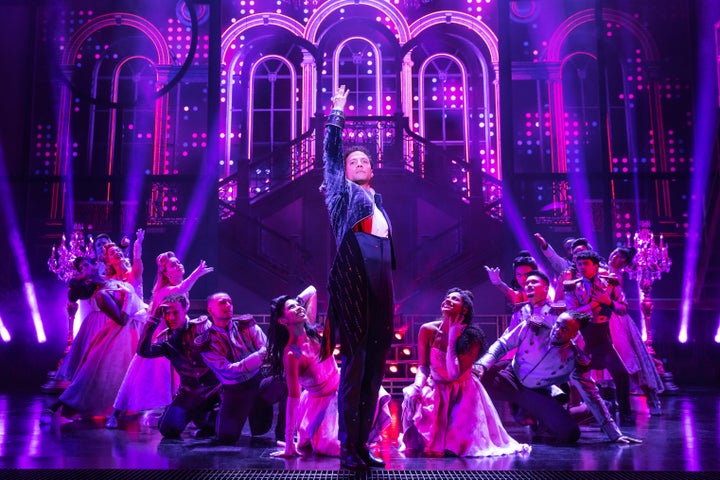
“Once Upon a One More Time”
You might have to enjoy bopping along to Britney Spears’ songs to truly surrender to the goofiness of director and choreographer Keone Madrid’s musical, based upon the pop star’s biggest hits. “American Idol” star Justin Guarini plays a philandering prince who does a whole number to “Oops…! I Did It Again” and his many mistresses and appointed main squeeze (Briga Heelan) hit back with “...Baby One More Time.” It’s not all vibes, though. Unfolding like a pastel-drenched, feminist-lite fairy tale, “Once Upon a One More Time” culls from Spears’ discography to present a two-act fable that questions the persistence of outdated fables in today’s supposedly more socially conscious age (*wink wink*). There are laughs galore met with wide-eyed truths portrayed by committed cast members who are in on every single joke — even when it’s on them. It’s fun, it’s silly, it’s self-aware. It’s Britney Spears, bitch.

“Purlie Victorious: A Non-Confederate Romp Through the Cotton Patch”
Servitude and comedy are a really tricky mix. You’ve got to have a smart playwright (the late, great Ossie Davis), a dedicated director (Kenny Leon) and one helluva cast (led by Leslie Odom Jr. and the criminally underrated Kara Young). Gratefully, “Purlie Victorious” has it all. An uproariously funny — as it says right there in the title — romp, it tells the story of a Black preacher (Odom Jr.) who concocts a foolhardy plan with a smitten young woman in tow (Young) and ultimately triumphant plan to gain his land back from a racist white man (Jay O. Sanders). Hijinks and hilarity ensue, with the help of a cast of characters that highlight the farcity of racism.

“Pictures from Home”
Much of playwright Sharr Wright’s “Pictures from Home” relies on the audience’s willingness to watch a photographer (Danny Burstein) scratch at his underdeveloped thoughts and ideals about aging, home and what it means to capture a still image of someone in the past. And not everyone is going to appreciate that journey, understandably so. But there’s something so heartfelt and earnest about what Larry (Burstein) feels that it ropes you in. We don’t know much about the wife and child he frequently leaves behind to visit his aging parents (the hilarious Zoë Wanamaker and Nathan Lane) in Los Angeles, but we do come to realize that there’s something about his memories of home that he’s trying to investigate and hang on to. It takes the skilled direction of Bartlett Sher to keep us invested and spark our own questions about home as we watch Larry incessantly beg his parents to explain what he was feeling or thinking about it in an old photo he took. Did his dad feel pressure to be his family’s hero, provider, and alpha male back then? Did his mother ever feel the need to appear smaller? In another image, was that what joy looked like for them? Why Larry cares so much about any of this is a question Irving (Lane) continuously asks, and one the audience likely ponders. Why does it take seeing your parents struggle to walk without a limp or talk about moving to Palm Springs to make us go into a panic about time and how little there is left — and how much has passed without us reflecting upon it? Wanamaker and Lane meet Burstein’s genuine curiosity with wry, at times curmudgeonly humor that makes “Pictures from Home” as delightfully familiar as it is bittersweet.
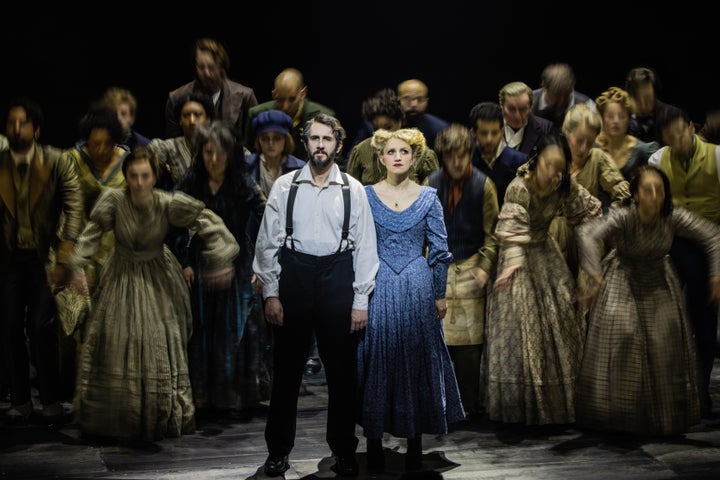
“Sweeney Todd: The Demon Barber of Fleet Street”
Many of us knew that the Annaleigh Ashford, a Broadway vet at just 38 years old, would bring it as the wickedly off-kilter Mrs. Lovett in this revival of Stephen Sondheim’s iconic “Sweeney Todd.” But not enough of you prepared us for the gargantuan Broadway talent of Josh Groban as the titular bloodthirsty coiffeur. Macabre as ever and dipped in black and red hues, “Sweeney Todd” remains a visual feast detailing grisly revenge, cannibalism by way of meat pies and a London town buckling in fear. That’s not to be outmatched by spectacularly morbid performances throughout (including from Ruthie Ann Miles and Gaten Matarazzo). Perfection.
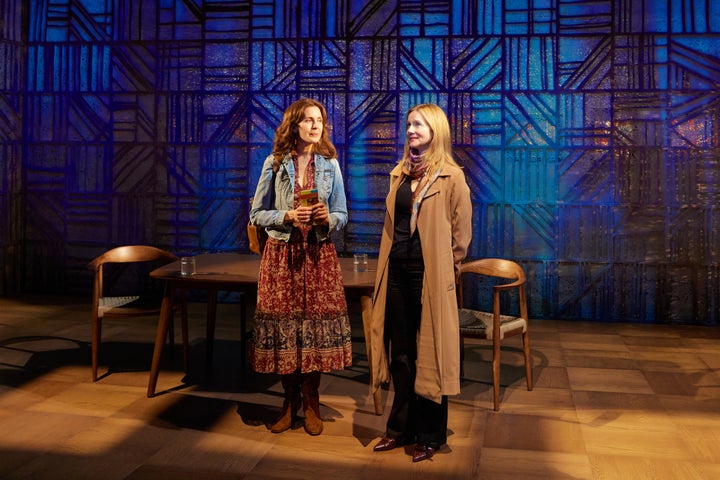
“Summer, 1976”
It’s not easy to maintain an audience through a 90-minute stretch of dialogue that only slightly shifts scenes. Director Daniel Sullivan, through David Auburn’s play, seamlessly brings the audience into what appears to be an already-in-progress discussion between two women (the great Laura Linney and Jessica Hecht) in Ohio that’s entirely about their unlikely friendship. We don’t really know who they’re talking to. They’re facing the audience, so getting comfortable with the idea that they could tell us a story about themselves is easy. And that feels fine as they reveal their stark differences — like single mom Diana (Linney) is the more rigid one and Alice (Hecht) is the free-spirited wife and mother — as well as what first drew them together so many years ago. They sometimes disagree and get loud about everything from parenting styles to their disparate ambitions. Then, one brings up a more sensitive subject that thrusts them into awkward silence. And then again, a humorous recollection breaks the ice once again. It says a lot that two characters sitting on chairs just talking about themselves, with a table somewhere on stage, are enough to interest the audience. But then, the narrative lurches into the future and into a whole new scene that leaves you wondering about the fragility of their relationship and whatever became of them. It’s a simple, honest journey of truth and friendship over the years.
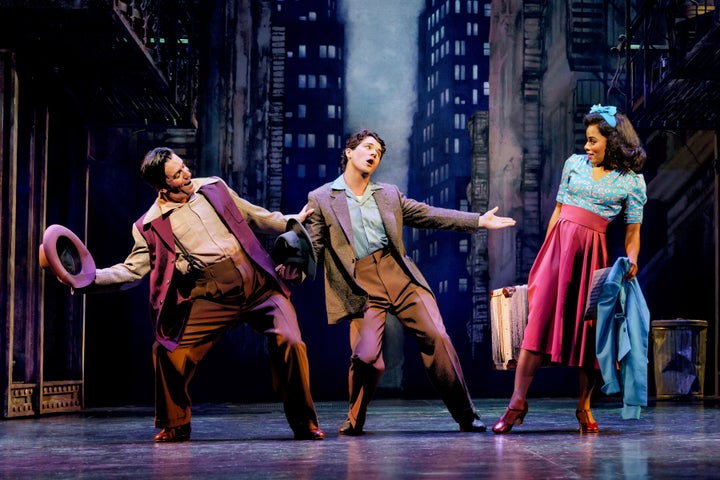
“New York, New York”
Like what’s going on in cinema right now, many overlong stage productions have been popping up all over Broadway. And to that end, book writers Sharon Washington and David Thompson’s “New York, New York,” a stage adaptation of Martin Scorsese’s 1977 film, clocks in at just over two and a half hours with one intermission. But it is a beautifully paced, sweeping narrative that recaptures the devastating, romantic, and, at times, triumphant era of 1946 New York City. While theoretically welcome, the thought of a more racially diverse cast comes with questions of, for instance, how realistic the portrayal of Black singer Francine Evans (a phenomenal Anna Azele) will fit into this previously white story and within this time period. But those concerns quickly melt away as we’re immersed in Francine’s central romance with Jimmy Doyle (Coltan Ryan), a white saxophone player similarly determined for greatness. The two battle trials and tribulations throughout the years, individually and together, are illuminated by a magnificently versatile set and powerhouse musical performances. “New York, New York” is everything you want in a theater experience.
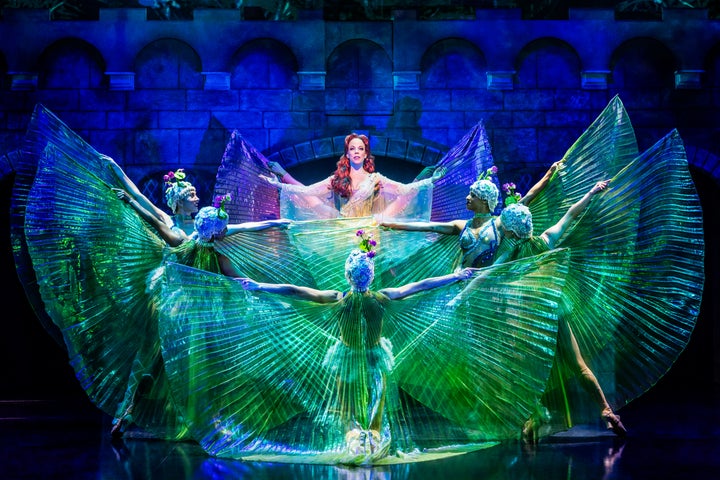
“Spamalot”
Having never seen a single “Monty Python” movie (I know, I know), expectations were nil going into this new revival of “Spamalot.” But if you appreciate silly humor, fart jokes, British royal buffoonery and mildly scathing satire, including the marginalization of women in these kinds of stories (thanks to Leslie Rodriguez Kritzer’s wildly entertaining performance), you need to run to this. Truthfully, it doesn’t even make sense that it’s this good. The set is very obviously fake. Every character in it is a wee bit idiotic. But that’s also the point. And as with more of Broadway now, this new “Spamalot” embraces diversity with a Black knight (“Aladdin” Tony winner James Monroe Iglehart) and his makeshift merry men (including “Saturday Night Live” alum Taran Killam) as they embark on a long journey for something called the “holy grail.” Nik Walker and “Ugly Betty” star Michael Urie are also a particular delight to watch, even when they have no lines in a scene. Oh, and you can’t forget The Lady of the Lake (Kritzer), even when the rest of the characters do. It’s all very foolish but side-splittingly funny—a fantastic jolt of levity in an otherwise heavy Broadway season.
